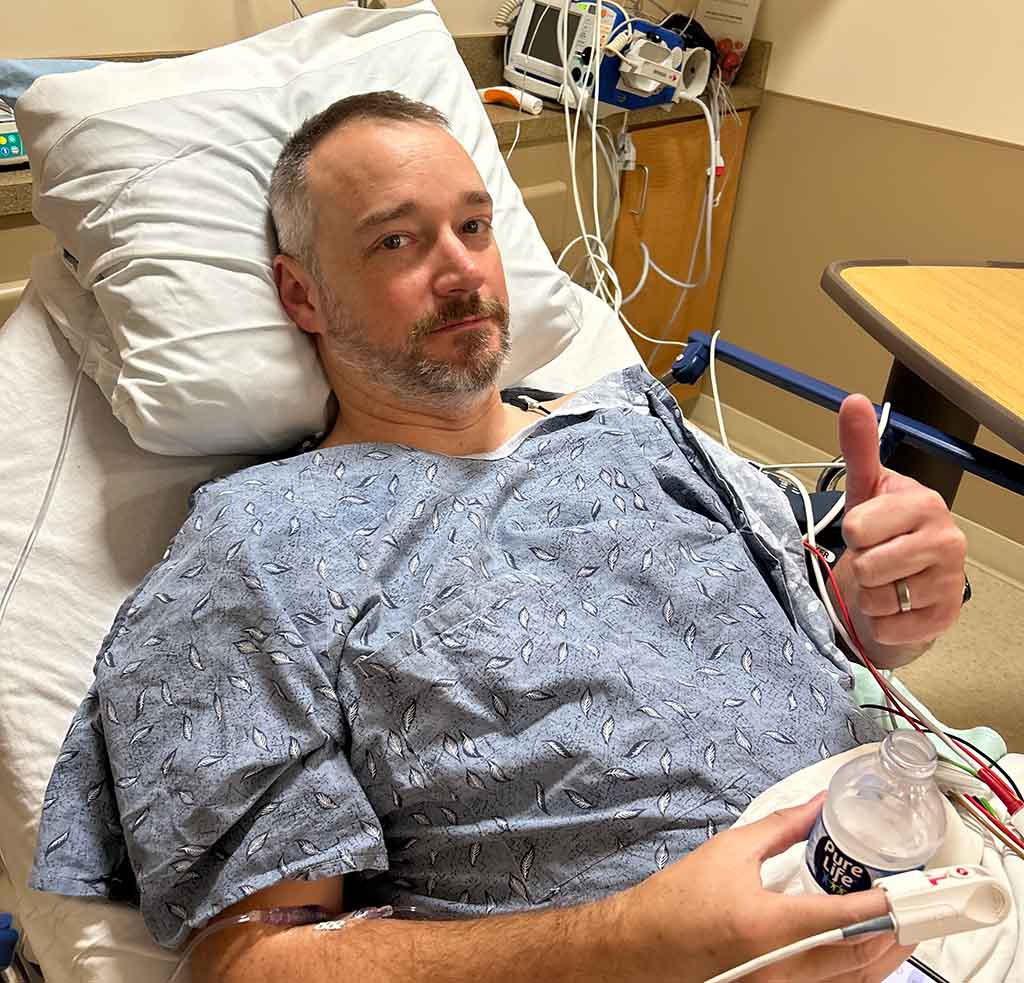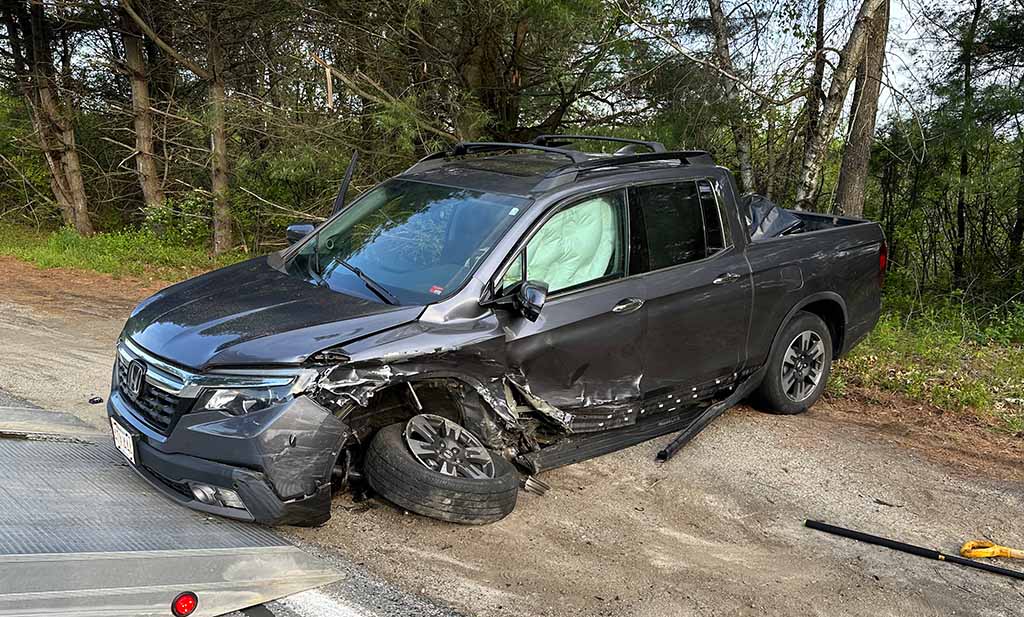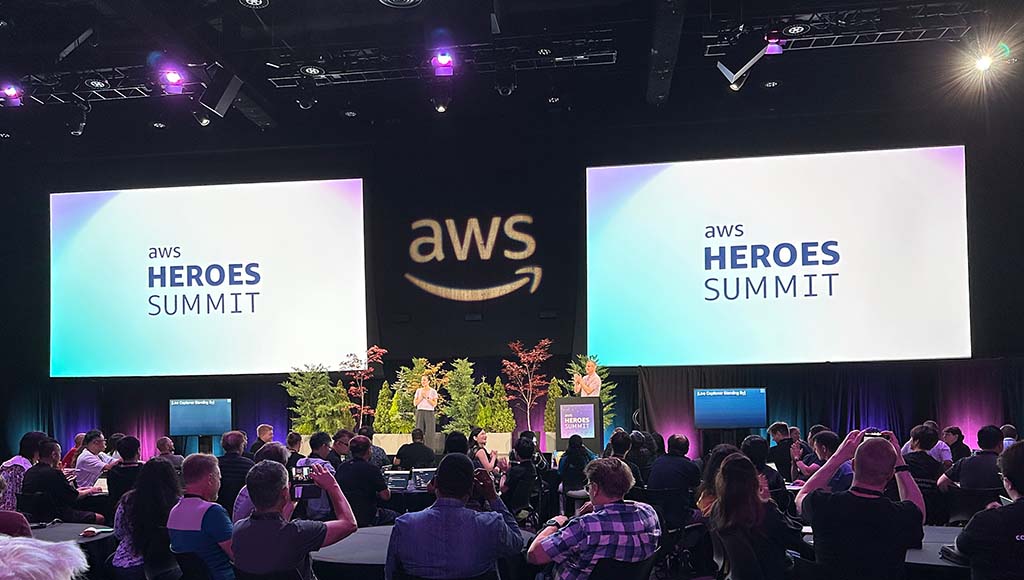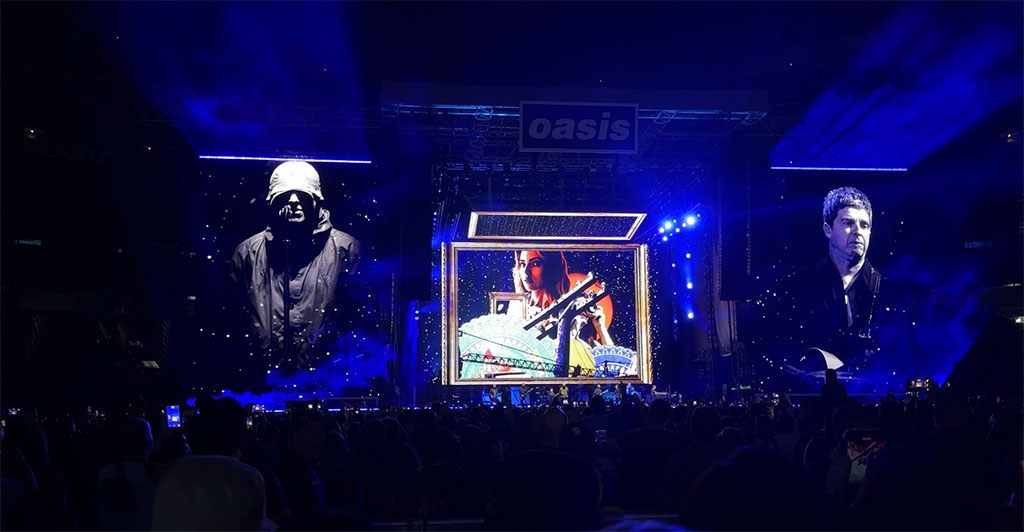Finding My Rhythm Again
After years of running, my heart finally told me to slow down. This is the story of how a heart condition, burnout, and a year of loss helped me find a new rhythm.

In April of 2025, my heart threw an unexpected exception.
I was 46, healthy, and active. I ran regularly. I ate reasonably well. I stayed busy. Too busy, maybe. When I started feeling short of breath walking up a flight of stairs, I thought I might have pneumonia or some sort of upper respiratory infection. I had refereed three youth soccer games in the near-freezing, early-spring rain the day before. Now I felt completely run down, like I was dragging an invisible weight.
I happened to have my annual physical already scheduled for later that week. After hearing my symptoms, my doctor ran an EKG. I sat alone in the exam room for a few minutes. She returned with a somber look on her face and I knew she had bad news. Both my grandfathers and my father died of heart attacks (two in their early 60s, my paternal grandfather in his early 40s). We had discussed my family history for years, but I naively hoped that my heart was the exception. Then she told me I was in AFib.
Atrial fibrillation. An irregular heartbeat that significantly increases the risk of blood clots that can lead to stroke and potential heart failure. Less than one percent of people under the age of 65 are diagnosed with it.
This was not the 1% I was hoping to eventually join.
My Rhythm Was Already Off
Looking back, the signs were there long before my heart hit a stack overflow.
In 2022, we spun out Serverless Cloud from Serverless, Inc. and launched Ampt, a new startup built on the promise of simplifying cloud development. I took on the CEO role, leading a small team of brilliant engineers through what we all knew would be a tough market.
It was an exciting time, but startups come at a cost.
To give it the focus it deserved, I had to put everything else on hold — the Serverless Chats Podcast, my open source projects, my writing, even my regular community involvement. These were all things that had once grounded me. But building a startup has a way of consuming everything in its orbit.
We started fundraising in August 2022, just as the “VC winter” began to hit. Then ChatGPT launched in November, and every investor conversation shifted overnight. Despite all that, we had a term sheet before the end of the year. The terms were terrible, but it was something. Then just as we were about to get the final commitment needed to fill out the round, Silicon Valley Bank collapsed. Our lead investor pulled out, and everything we’d worked toward suddenly seemed out of reach.
We pushed through anyway.
In September 2023, we launched Ampt to the public, found some paying customers, and showed solid month over month growth. It still wasn't enough. By then, AI was consuming every venture portfolio. So we did what any sensible startup would do — we came up with our own (rather compelling) AI story. Think 'building an app using natural language'–level compelling. We shopped it around and eventually attracted some genuine interest from a very well-known firm. Then after several extremely positive meetings over the course of a few weeks, they went silent.
We had spent the last 18 months working on Ampt. I had spent most of that time raising money, refining pitch decks, meeting with investors, and answering a never-ending stream of the same questions on repeat. All while forcing a smile and trying to hide my growing frustration. It was exhausting. We'd kept the lights on through sheer willpower and support from a handful of angel investors. The team was burnt out. And so was I.
The team's resilience and dedication was inspiring. But the limit had been reached. It was time to focus on supporting our families. Everyone wanted to moonlight when they could — something I didn't expect, but greatly appreciated.
When You Can't "Let It Go"
When it comes to startups, I've always been a go-down-with-the-ship kind of guy. If you look up "sunk-cost fallacy" in the dictionary, you'll likely see my picture. Ampt was no exception. I still believed in the vision, and I wasn't ready to let go. So I pushed on, by myself.
For the next few months I continued to work nearly full-time on Ampt. I spent most of my time supporting customers and building the occasional new feature here and there. I also produced several weekly live streams, which I really enjoyed doing. But they also made me think about all the enhancements I wanted to make. An unlikely prospect given that it was just me (before stable releases of Claude Code and Cursor).
For all intents and purposes, we were in quasi-maintenance mode. Progress was slow. So was growth. I took on some small consulting gigs to bring in cash, but the personal financial pressure kept mounting. My oldest daughter was starting college at the end of August. This was a major transition, as it is for any parent, as well as a major expense. Our rainy-day fund needed sunshine. The stress was building. That forced smile was back.
In September, I started consulting for CloudZero. I really liked what I saw there. Great product. Great people. When a full-time opportunity presented itself, I couldn't pass it up. I joined as their Director of Research in November and it felt like a perfect fit. I was going to be working on AI and Big Data with an awesome team behind me. But like most things in life, it came at a cost. I was still supporting customers on Ampt, still writing the Off-by-none newsletter every week, and trying to be a present husband and father. All on top of this new job that I loved and was giving my all to.
I knew it was too much, but I convinced myself that momentum meant progress.
By the end of 2024, I was stressed and exhausted. I had to leave re:Invent early because I became sick with some sort of horrible cold/flu. Not only did I miss Werner's keynote, but I also missed Weezer at re:Play (don't judge — I went to high school in the mid-nineties). I spent the holidays in a general malaise, telling myself I’d feel better once I was able to get some rest. I didn’t.
When the Heart Speaks
It's arbitrary, but a new year always seems to offer a chance to reset. To resolve to make positive change. You promise yourself you'll do better. Be better. I was still stressed, I still felt like I had the weight of the world on my shoulders, but I told myself that this year would be better. It had to be.
It started off promising. I was finally filling out my team at work, we closed 1H planning with a good balance of stretch and attainable goals. We had a plan. We were making progress, and the progress was exciting. Our AI Agents research was showing extremely positive results. The first quarter was now coming to a close, spring was here, and I felt the weight lifting.
On the first Saturday in April I refereed those three youth soccer games. It was only 40°F (4.5°C), and it was raining heavily. I was completely soaked through and frozen to the core. I don't remember ever feeling that cold. The next day I developed a cough, shortness of breath, and the kind of fatigue that a quick run usually shook me out of. Not this time.
I tried running a 5K mid-week and had to stop to walk every few minutes. It was the hardest run I'd ever done.
When my doctor eventually told me I was in AFib, I just stared at her. I’d spent years optimizing systems, debugging infrastructure, fixing the things that broke. Now it was me that was broken. I had to trust that the doctors were as good at their job as I was at mine.
The good news was that my resting heart rate was only in the 80s, incredibly low for the typical AFib patient. I'm normally in the high 40s, a testament to the power of running several 5Ks per week. The low heart rate meant it wasn't a life-threatening emergency, but it still needed to be monitored and treated right away. And the prognosis wasn't particularly encouraging. It could be something I'd need to live with forever.
She prescribed Eliquis (a blood thinner) and Metoprolol (a beta blocker) to keep my heart rate down. She referred me to a cardiologist and scheduled some additional tests. Then came the doctor's orders. No running. No alcohol. Minimize stress. Make sure I keep my heart rate under 110 bpm to avoid rapid ventricular response (RVR).
My malfunctioning heart sank. This was not the year I'd been hoping for.
My doctor and I talked for a long time, much longer than what’s normally allotted for a routine physical. Running was my stress reliever. Evenings and weekends were when I decompressed, working on projects around the house, spending time with my family, or tinkering on side projects that gave me energy. I also enjoyed an occasional craft beer or a pour of whiskey to take the edge off after a long day. The constant tiredness and restrictions of AFib were going to steal most of that away from me.
She suggested talking to a mental health professional, something I had been guilty of stigmatizing my entire life. But I realized I wasn’t just dealing with a heart condition; I was dealing with years of mounting stress and burnout I had refused to acknowledge. It was the first time I finally admitted I couldn’t just willpower my way through it. I needed help managing the stress and regaining focus, and for the first time in my life, I stopped seeing that as weakness.
Getting that support, and the right medications to help quiet and focus my mind, was one of the best decisions I have ever made. Healing isn’t just about fixing your heart; it’s about taking care of your head and everything connected to it.
When It Rains, It Pours
A week later, I got a transthoracic echocardiogram. Structurally, my heart was fine. That gave me hope. My doctor said the cardiologist would likely perform a cardioversion — a controlled shock similar to the whole "clear" thing doctors yell on TV. This would likely get me back in sinus rhythm and then maybe this whole thing would be over and done with.
Then life did what it always does.
In May, my mother-in-law was hospitalized with pancreatitis. A few days later, my seventeen-year-old daughter was in a major car accident. A seventy-year-old man fell asleep at the wheel and crossed over the double yellow line into her lane. Luckily she swerved to avoid getting hit head on, but his car hit the driver side while both vehicles were traveling over 35 mph. His car spun multiple times and ended up back in his lane. My pickup truck that my daughter was driving ended up perpendicular to the road.
I got the call around 6:45 am. I took my wife's car and sped to the scene in a panic, driving past the backed-up traffic, scared to death of what might be waiting for me. I found her standing next to a paramedic, shaken but alive.
I gave her a hug that seemed to last forever. Relief washed over me. She had some burns from the air bags and a few minor scrapes, but otherwise she was okay. My truck most definitely wasn’t. And neither were my stress levels.

When I saw my cardiologist, he officially diagnosed me with persistent AFib. I had been in AFib for almost 6 weeks at this point, and I knew this wasn't going away on its own. We scheduled a cardioversion for the end of the month.
It worked. For a few glorious days, I was back in sinus rhythm. I even went for a short run with my daughter. But six days later, while attending a conference in San Diego, I slipped back into AFib.
Round two. Another cardioversion two weeks later. This time, the cardiologist put me on Amiodarone — a powerful anti-arrhythmic with a list of side effects that reads like a pharmaceutical horror story. Liver failure. Lung damage. Thyroid dysfunction. Vision problems. Skin discoloration. It was clear that we needed a longer term solution. My cardiologist recommended a cardiac catheter ablation. September 25th was the earliest appointment available, and it was only the middle of June.
Then, a week later, my mother-in-law unexpectedly passed away from necrotizing pancreatitis. She was seventy-three, the matriarch of the family, and the most caring and thoughtful person I'd ever known. Her loss broke all of us. Especially my wife.
Two days later, I slipped back into AFib. I couldn’t tell my wife. She was grieving, and she didn’t need something else to worry about. The next day I messaged my cardiologist to discuss options. That afternoon I suddenly started feeling better, and my Apple Watch confirmed I was back in sinus rhythm. My cardiologist said it was the Amiodarone doing its job.
I called it mercy.
A Slow Return
Summer arrived without the usual fanfare. My wife was still grieving, spending most of her time helping my father-in-law go through the material things my mother-in-law left behind. A closet full of clothes, jewelry collected and inherited over the course of her life, and a mountain of boxes filled with generations of family photos and keepsakes. There were lots of tears, intermixed with the occasional smile as memories came flooding back. Momentary respites from all the grief. It's hard watching the people you love suffer, especially when there's little if anything you can do to ease their pain. I forced another smile. I needed to be the shoulder to cry on. I knew this was what my family needed, and the healing was going to take time.
Despite everything that was going on, I felt stable for the first time in months. I took a break from writing the Off-by-none newsletter, I took my annual beach vacation with family friends, and I journaled (a lot). I got to watch my daughter play with her team at the NFL Flag Championships in Canton, OH (she was even on ESPN). On the way home, we stopped at Niagara Falls and rode the Maid of the Mist. I even started running again. I was regaining my strength.
In August, I flew to Seattle for the AWS Heroes Summit and started to feel like myself again. Reconnecting with old friends and meeting new ones from the Heroes community was exactly what I needed. It reminded me how much I loved being a part of it, and how good it felt to contribute and help others.

Up until the Heroes Summit, I was relatively quiet about my medical issues. But amongst my friends, the conversation came up several times. AJ Stuyvenberg (a friend and fellow AWS Hero) told me his first job out of college was at the company that invented Pulsed Field Ablation (PFA), the new, safer, recently FDA approved technology they’d use for my procedure in September.
He told me it was incredibly safe. I told him that as long as he hadn't written any of the code, I was willing to believe him. 😉
Once I got home, I felt as though something had changed. I was suddenly incredibly motivated. I had a much clearer sense of where I wanted to spend my time. Time with family, time with friends, and time for the community that had brought me so much joy in the past.
My wife and I hosted a family BBQ at my house in late August. There were almost 40 of us, missing only one person who couldn't make it. It's hard to get a group that big together, so when you can, treat it like the gift it is.
The next day I took my youngest daughter to see Oasis at MetLife Stadium in New Jersey. The ticket prices were ridiculous, but the concert was amazing. There's something incredibly special about watching your kid sing along to the songs you loved when you were their age. We stayed in a hotel that night, then drove four hours the next morning to drop her off at school. I remember thinking as she napped in the car on the way back: whatever happens next, I’m glad I had this.

The Night Before
The night before my ablation, my wife and I were sitting at the kitchen table. I was nervous but ready. I had researched the procedure, knew the odds, and trusted that if my insurance company was paying $102,000 for this, then I was likely going to get their money's worth.
Then she said, “You should probably make a list of all our accounts and passwords. Just in case.”
She wasn’t wrong to say it, but it made everything seem very real in a way it hadn’t before. Things go wrong, doctors make mistakes. Regardless of the odds, there was a very real, albeit small chance that I just finished my last meal. That terrified me.
The Procedure
We drove to Tufts Medical in Boston early in the morning.
There was a lot of shaving, including the hair on both wrists so they could insert IVs. There were at least ten doctors and nurses in the operating room and a giant matrix of computer monitors to precisely control the catheters. They covered me in more than forty electrodes, strapped me to the operating table, and a nurse ran through the pre-op checklist. That's the last thing I remember.
While I was anesthetized, they threaded catheters through my femoral arteries and up into my heart. They then used the PFA system to identify and cauterize the overactive cells.
Two and a half hours later, it was done.
I woke up with a sore throat from the breathing tube and a dull ache where the catheters had been inserted. My wife was by my side. I had to lie flat for several hours to minimize any bleeding, but after a few checks, I was cleared to go home that night. That's modern medicine. My doctor had told my wife after the procedure that everything went perfectly. There's no cure for AFib, but this should keep me in sinus rhythm for the next few decades.
Recovery
The recovery was uneventful, which is exactly what you want after a procedure like this.
No lifting anything over ten pounds. No running. Lots of time to think.
A week later, I took my oldest daughter to see Whose Live Anyway?, a live version of Whose Line is it Anyway? We went out to dinner, laughed for two hours straight at the show, and had a rare opportunity to reconnect. Something that college-aged children don't often have time for.
A few days later, I ran my first post-surgery 5K. It was slow, cautious, and deliberate — but I ran the entire time and finished. It was a good start.
Looking Ahead
At the end of October, my cardiologist plans to take me off the Amiodarone.
By the end of the year, I should be done with the blood thinners, too.
If all goes well, I'll start 2026 with all of this behind me.
I still have a way to go to get back to my "normal" self, but after half a year of chaos, and the burnout that led up to it, this experience has given me a new sense of optimism. And that fuels my motivation.
Over the last few weeks, I’ve started writing again. I’ve been re-engaging with the community, working on my open source projects, and reconnecting with the people and projects that once gave me energy.
I'm not quite ready to bring back the podcast, but maybe someday.
What I Learned
This year tore me down. It also rebuilt me.
I had to face my mortality, watch someone I loved die, and pause the parts of my life that defined me. But it also forced me to remind myself of some of life's most important tenets.
It’s okay to step away. Your health, both physical and mental, matter more than any startup or project.
Support is everything. Family, friends, and co-workers don’t just help you carry the load, they remind you that you don’t have to carry it all by yourself.
And you’re not alone. Everyone is fighting something. Be kind. And if you need help, ask for it.
After years of optimizing for performance, I’ve started optimizing for balance. We can't control what life throws at us, but we can choose how we deal with the hand we're dealt. I'm not religious, but there is something beautiful about the Serenity Prayer. That wisdom to know what can and cannot be changed often comes from lived experience. These last few years have taught me some hard lessons. My hope is that they've prepared me for whatever comes next.